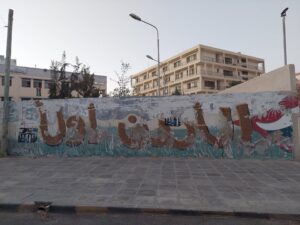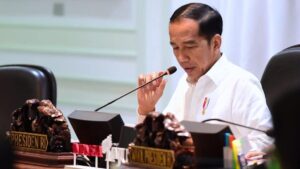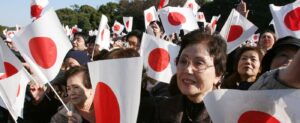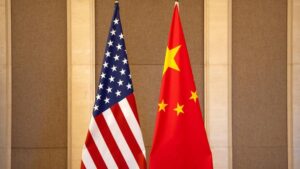56 Years Passed and (Still) Not Okay To Be A Leftist in Indonesia
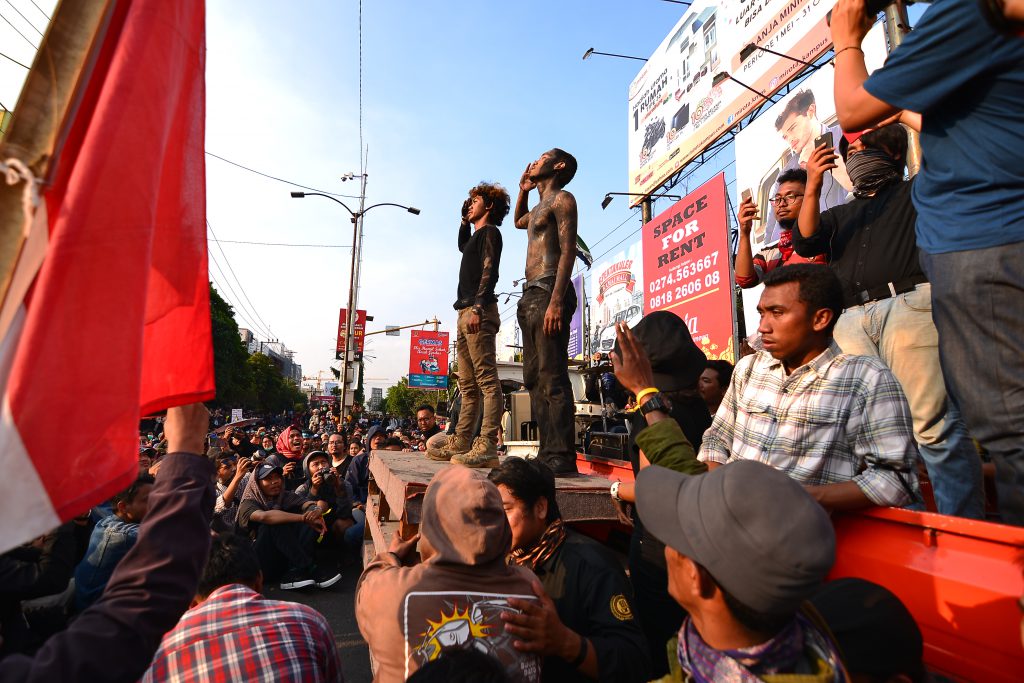
Dokumentasi Penulis
It is not something new that in every September, civil society in Indonesia commemorates the event of September ’65 coup d’état. This event has two different perspectives—at least after the fall of Suharto. In the pro democratic group perspective, it is understood as a turning point of the authoritarian military government taking full control of political power. A coup d’état full of bloody hands. In contrast, in the ruling class’s perspective, the ’65-66 tragedy is understood as a coup d’état designed by the Communist Party of Indonesia (PKI) to take power from Sukarno. This idea became a major hegemony that was used by the Suharto regime to maintain his power for 32 years.
The discussion about the event of the ‘65-66 genocide does not stop there. There is something beyond outside the discussion about the number of people that were killed in the genocide and the architect of the kidnapping of the seven generals at midnight on September 30th 1965. The fundamental question about this historical legacy is, what is the correlation between the ‘65 genocide and its implication for the youth generation in Indonesia?
The Darkest Days in Indonesia
It will be difficult to understanding the mass murders in ’65-66 as a ‘genocide’ if we use the definition by the United Nation in 1948. This international organisation only mentions killing of groups based on nationality, race, or religion to define the ‘genocide’. Nevertheless, we are not going to discuss the legal matters. In this article, I focus on the political background behind the genocide. Therefore, the definition about genocide needs to be politically negotiated. Without negating the truth that the mass killing, and torture are truly happen in 1965-1966 in Indonesia.
It is very important to understand the socio-political conditions before the ‘65-66 genocide. Indonesia was in the proximity of a socio-political revolution. This revolution, according to Reid (2011), is a way for Indonesia to enter the modern community of the nation-state through a political revolution. Adapting the interpretation from Yeo (2015), the revolution here does not merely denote political changes but also connotes sociocultural transformations that Indonesians had experienced for a longer period of time beyond the 1940s.
It is also important to look at the socio-culture of political dynamics before the ‘65-66 genocide. The masses themselves vividly showed their interest to participate in the political life of the state. Soekarno, together with the Indonesian National Party (PNI), Communist Party of Indonesia (PKI), and Indonesia Party (Partindo), managed to win most of the support from the broad civilian population in ten years time. Civilians seemed passionate about putting a culture of political organisation into their daily lives. During the 1950s until 1965 before the massacre, the masses from the lower class actively confronted any policy that benefited landlords and military capitalists (Lane, 2014). They openly confronted the methods of land occupation, etc.
The closer the civilians to the revolution, the more it made the counter-revolution more passionate. These counter-revolutionary agents consisted of the petty bourgeoisie, local landlords, most of whom during the defence of the 45th Revolution chose to assist the Dutch aggression. However, this sea of petty bourgeoisie did not have sufficient resources to carry out the task of socio-political revolution as has occurred in the West (Anderson, 2000).
It is interesting as well to see the point of view from the counter-revolutionary perspective, especially the West—which at that time still struggled against the Communist bloc in the Cold War era. The US understood very well that the civil bourgeoisie in Indonesia could not be an ally in the Cold War against the Sino-Soviet bloc. Therefore, Eisenhower, Dulles brothers and American Cold War soldiers were more interested in anti-Sukarno political measures in the military wing (Foreign Relations of the United States, 1960). It started by helping the upraise of the local military-land force army to the central government in Sumatra and Sulawesi in 1957-1958. This unsuccessful coup was later called a coup of PRRI Permesta. This coup could be demoralised by Sukarno by sending a fully equipped army. After that, the US tried to develop a long-term strategy—helping Army officers prepare for a major attack against the PKI (Roosa, 2008).
Weiringa and Nursyahbani (2019) in their book called Propaganda and the Genocide explains that on September 30, 1965, a group of middle-class people loyal to Soekarno and the chairman of the PKI Special Bureau declared a plan to kidnap seven army generals, then bring them to Sukarno. This was based on the suspicion that the seven generals were planning to disobey Sukarno’s government. However, six generals and one lieutenant were killed, while one general was able to escape. Immediately on the next day, Suharto, who was directly appointed by Sukarno to be the general of the Indonesian Army, announced that the event was a PKI’s coup. Nevertheless, the killing of six generals and one officer from military-land, was an effort by Aidit, a leader of PKI, but it was badly organised (John Roosa, 2008).
After that, dark and terrible days enveloped Indonesia. Many historians that focus on Indonesia’s modern history reveal that hundreds of thousands to millions of people were killed. Meanwhile, the reality of the practice of violent terror that created trauma for survivors can be clearly illustrated in two documentaries directed by Joshua Oppenheimer, The Act of Killing (2012) and The Look of Silence (2014). Time magazine described that event as “the best news in Asia for several years for the West” (T. Ali, 2003).
In this case, the method of political mobilisation used the lower class as a resource by the Left-Wings, PNI, PKI, Partindo, and any mass organisations affiliated with these organisations, successfully alienated the landlords and the bourgeoisie from the military in a dynamic socio-political revolution. This was the material foundation of the ‘65-66 genocide, a desperate effort to stop the social basis (culture of public participation in politics) for the future government—stopping the dynamics of revolution in Indonesia.
Demonizing Those Who Have Other Opinions
Classic critical social thoughts state that the ‘dominant ideology in our society is the ideology of the ruling class’. One proof of this expression is clearly seen in Herlambang’s book, Post-1965 Cultural Violence: How the New Order Legitimized Anti-Communism Through Literature and Films (Kekerasan Budaya Pasca 1965: Bagaimana Orde Baru Melegitimasi Anti-Komunisme Sastra dan Film). This book reveals the material foundation reality of Indonesia that is anti-leftist, racist, and puritanical.
We can imagine how uncomfortable it must have been for those who were ‘demonized’ in the days of the massacre and after—the 32 years of Suharto’s era. Especially for those who are still living as political prisoners, the families of the prisoners, or those who are forced to stay as political exiles in foreign countries and unable to return to their homeland. These survivors lost their youth because they had to hide or their rights of citizenship were revoked by the Suharto military regime. A film entitled Letters from Prague by Angga Dwimas Sasongko (2016) captured this bittersweet reality, showing a portrait of someone who must give up his lover because he cannot go back to his homeland.
However, as what is portrayed in the novel called Pulang by Leila S. Chudori, there is ambiguity in viewing the 65-66 genocide. Both works on one hand, acknowledging that the ‘65-66 genocide is a human tragedy, creating suffering for those who are alienated in other countries. There is not a single figure who represents a person who is proud or feel comfortable in choosing and believing the ideology that then was and now is still demonized by the Suharto regime, even after his downfall. It is in contrast, if we are trying to compare, with the conditions before the massacre. People can proudly and openly express their political ideology and pride in being a member or sympathiser of a political organization or its affiliates.
This kind of culture was not born singly. The expression of being proud to be a member of an anti-imperialist organisation is a culture that has emerged since the early 20th century in the archipelago. A film called Guru Bangsa: Tjokroaminoto directed by Garin Nugroho (2015) gives a clear illustration on this expression, then suddenly Suharto erased that culture—maintained it with a terrible genocide. Almost nothing has changed after the fall of ‘The Smiling General’. Our political culture is dynamically, passive for more than 20 years after Suharto’s resignation. It is still continuously demonizing the Left ideology.
This kind of situation still exists in our political figure. For instance, Basuki Tjahya Purnama (Ahok), who in 2013 was the Deputy Governor of Jakarta, called the Pluit community as ‘communist’ because they did not want to be evicted from their land. A Pluit community did not hold the discussion about Das Capital or establish a political party using Marxist ideology. If it is so, that is not a problem if this state truly believes in democracy as an important aspect. But in this case, Pluit’s community just did not want to be evicted from their land—then Ahok called them ‘communist’.
The other example, there was an issue that Jokowi is a PKI cadre during the presidential election campaign in 2014. There was also a statement from Gatot Nurmantio in 2018 that spread an issue on the rise of PKI to gain his political electability. This is not only heart-wrenching for the survivors who are still alive today, who still believe their ideology that is ‘demonized’ by most of the society, but it also tortures the imagination of the young generation who bear the sustainability of the nation’s development.
Democracy Without Cultural Changes and Will it Continue?
After the fall of Suharto due to the students’ movement led by PRD and the economic crisis in Asia, there is a socio-cultural condition that is vague and difficult to be captured by the young generation, at least those who were born in the 1990s. That is the condition where the ruling class makes an effort to maintain a culture of demonizing the Marxist ideology—with keep rejecting the reconciliation of the ‘65-66 genocide.
This attempt of maintaining the ruling class hegemony faces with the struggle from several civil communities who try to uncover the dark events of the ’65-66 genocide to peel the historical truths—which, if exposed, will reveal the wickedness of the ruling class after the Reformasi ‘98. While the ruling class can still maintain the truth about the ’65 history as a secret, it indirectly blinds the next generation in seeing the future of their nation. This is the essential truth of the cultural persecution to the young generation after the ‘65 event.
The ‘65 genocide, this historical issue, must not be forgotten. That is the spirit in disguise that can be seen from Bedjo Untung, Kaminah and Kusdalini, et al. Those the part of the old generation choose to always reproduce the dark events of ’65-66 rather than burying them deeply. Their willingness to continue reproducing the event implies that we are no longer living in the Suharto era. Civilians already have the democratic space that can be used to pay the historical debts of rotten leaders.
Anderson (2000) has said a long time ago in his letter that the petty bourgeoisie in Indonesia will never be able to settle the debts of history. This means that there is no other choice except putting the task to the young generation. It is reasonable because the youth, who were born in the 1990s, are at least not strongly affected by Suharto’s cultural hegemony. They live amidst the era of intersectional culture. What they need to do is choose a foundation to develop our nation’s character for the future: continuing the old political culture or building the new ones.
If the youth choose to build a new culture of the nation, there is no other choice than to start giving their solidarity to the survivors of the ‘65-66 massacre—while at the same time using their stories to learn what really happened. They can also expand it with various different aspects—social, cultural, political, and economic perspectives. This is the only way for the young generation ‘experiencing’ the ’65-66 tragedy today—by engaging in reproducing the ’65 event and learning its implications for today’s national conditions. Moreover, the work of intergenerational reproduction will assist the movement of this unfinished nation-building process, cracking the stagnation of democratisation in the cultural aspect, giving the opportunity of alternative political imaginations to the young generation.
References
Ali, T. (2003). The Clash of Fundamentalism: Crusades, Jihads and Modernity. Verso, London
Anderson. B. (2003). Indonesia Statistik: Surat buat Para Pembaca. Cornel University Press, No. 69 (Apr., 2000), pp. 173-175 (3 pages). https://doi.org/10.2307/3351280
Chudori. S. L. (2012). Pulang. Kepustakaan Populer Gramedia. Indonesia
Firdaus, F. (2013). “Sebut Komunis, Ahok Tak Berikan Contoh Baik”. News.okezone.com. https://news.okezone.com/read/2013/05/13/500/806441/sebut-komunis-ahok-tak-berikan-contoh-baik
Foreign Relations of the United States. (1960). Draft Statement of U.S Policy on Indonesia”. Foreign Relations of the United States, 1958-1960, Indonesia, Volume XVII. Washington, 19 Desember, 1960. https://history.state.gov/historicaldocuments/frus1958-60v17/d293
Nugroho, G. (2015). Guru Bangsa: Tjokroaminoto. Yayasan Keluarga Besar HOS Tjokroaminoto Picklock Production. Indonesia
Herlambang. W. (2013). Kekerasan Budaya Pasca 1965: Bagaimana Orde Baru Melegitimasi Anti-Komunisme melalui Sastra dan Film. Marjin Kiri. Jakarta
Kompas.TV. (2018). “Siapa Mau Nobar Film G30SPKI? – ROSI (2)”. https://www.youtube.com/watch?v=Lp-zgPaNNO0
Lane. M. (2014). Unfinished Nation: Ingatan Revolusi, Aksi Massa dan Sejarah Indonesia. Djaman Baroe. Yogyakarta
Lane. M. (2014). “Indonesia, 65: Merehabilitasi Korban, Merehabilitasi Revolusi”. https://maxlaneonline.com/2014/11/06/artikel-setelah-film-jagal-indonesia-1965-merehabilitasi-korban-merehabilitasi-revolusi/
Oppenheimer, J. (2012). The Act of Killing. Piraya Film. Norway
Oppenheimer, J. (2014). The Look of Silence. Piraya Film. Norway
Reid, A. (2011). To Nation by Revolution: Indonesia in the 20th Century. NUS Press. Singapore
Roosa, J. (2008). Dalih Pembunuhan Massal: Gerakan 30 September dan Kudeta Suharto. Hasta Mitra. Jakarta
Sasongko. A. D. (2016). “The Letter from Prague”. Visinema Picture. Indonesia.
Weiringa, Saskia & Katjasungkana Nursyahbani. (2019). Propaganda and the Genoside in Indonesia. Routletge, London
Yeo, Woonkyung. (2015). Book Review Anthony Reid to Nation by Revolution: Indonesia in the 20th Century. Southeast Asian Studies (2015), 4(1): 222-224. Center for Southeast Asian Studies. Kyoto University
Rizaldi Ageng Wicaksono is a Law student at Universitas Islam Indonesia. He can be found on Instagram with the username @rizaldiaw

